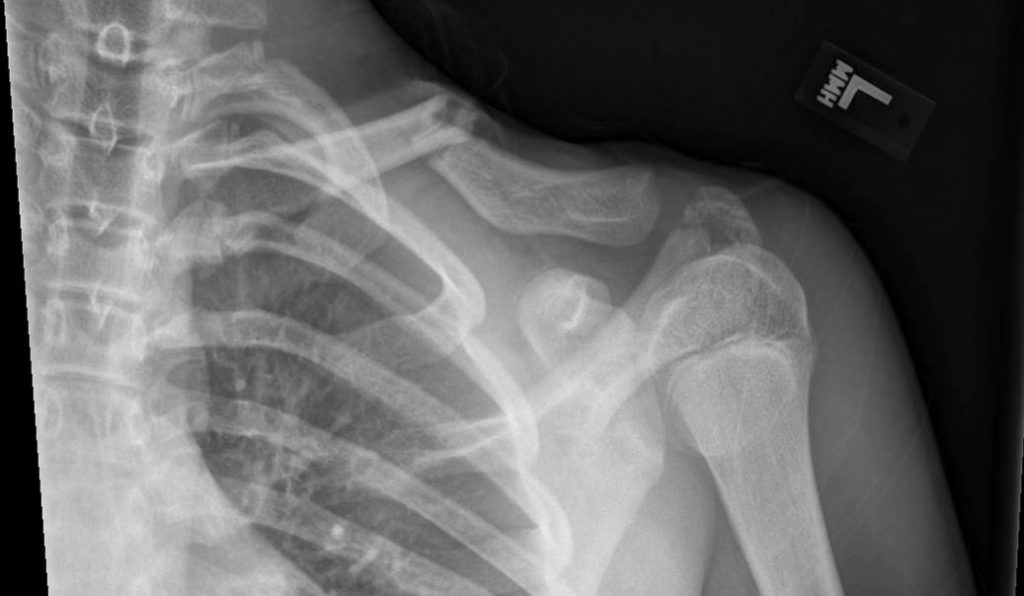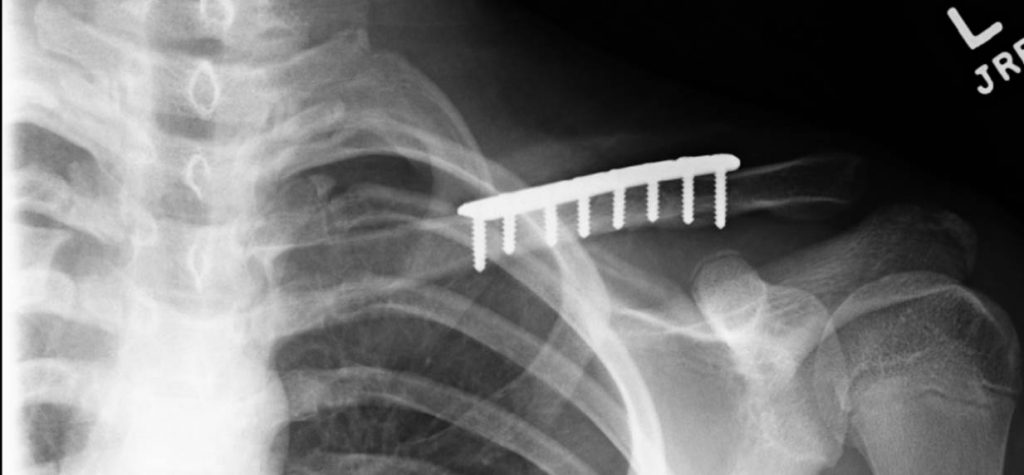The clavicle, also known as the collar bone, provides attachment between the axial skeleton and the appendicular skeleton. It also keeps the shoulder appropriately spaced out from the body to provide adequate muscle tension to move the shoulder through a full range of motion. It also is a site of multiple muscle attachments and serves to protect important neurovascular structures.
Clavicle fractures make up roughly 10% of all fractures. Clavicle fractures are often described as distal, middle, and medial third clavicle fractures with each type of fracture occurring at different frequencies based on age and gender. Approximately 75-80% of all clavicle fractures are middle third fractures and tend to occur in the younger (<30 yo) male population after a fall on an outstretched hand or direct trauma to the shoulder.



Clavicle fractures can be very painful and make it hard to move your shoulder and arm. Additional symptoms include:
Your orthopedic team will assess the X-rays of your clavicle to determine the best treatment option. Treatment considerations include fracture location, amount of displacement, surrounding ligament integrity, amount of bony overlap, fracture stability, neurovascular involvement, patient age and activity level, and underlying medical conditions.
If surgery is determined as the best course of treatment, your orthopedic team will review different fixation options. The most common is an open reduction and internal fixation (ORIF) using plates and screws. This option provides for good bony alignment and stable fixation of the fracture. Also, if a patient is wanting to return to sport, surgical fixation can hasten the return to play timeline. After an ORIF, the patient may feel a patch of numbness just below the incision due to cutting of sensory nerves. Over time, this area of numbness tends to diminish and may completely resolve. It is common, however, to have a small patch of numbness below the incision and the patient may feel a slight prominence from the plate beneath the skin. Generally speaking the plate does not cause any issues and the hardware will stay in without needing to be removed. However, in a small population of patients, the plate can cause some irritation while wearing seat belts or wearing back packs. If the plate becomes problematic, the hardware can be removed once the bone has adequately healed. Hardware is usually left in place 8 months to a year depending on age. In the younger population (adolescents and younger), it is beneficial to remove the hardware at 8 months regardless. This is done to prevent bony overgrowth of the plate which makes hardware removal significantly harder later in life, if this were required.